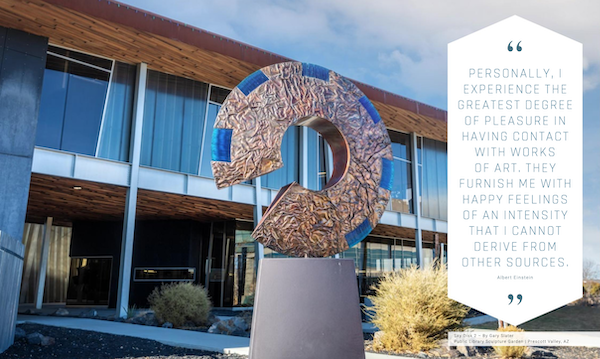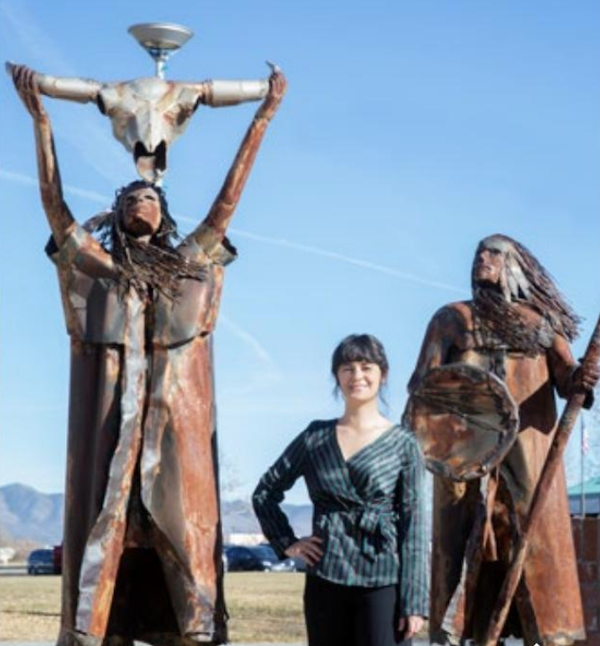
The Town of Prescott Valley, Arizona has plans to make their Art at the Center sculpture garden even easier for their citizens to enjoy with a little help from technology. According to Arts and Culture Coordinator Isabella Chewning, the town has plans to install plaques with special Quick Response (QR) codes near each sculpture. Visitors can scan the code with their smartphones and listen to an audio recording. These audio recordings will give more information about each piece, the artist and the materials used.

QR codes are a variation of matrix barcodes. Originally designed in 1994 to be used in the Japanese automotive industry, QR codes quickly became popular for other uses. Because these codes can be “read” by devices like a camera, have fast readability and are able to store a large quantity of information, this tech is a good fit for the sculpture garden. Thanks in large part to a generous private grant, the town has a significant collection of outdoor public art sculptures from a range of local and regional artists. The majority of the collection is placed in and around the Prescott Valley Civic Center and these pieces are already available for the public to view. There are other sculptural pieces in the area as well, located on public trails and parks in the Prescott Valley area. All of the pieces will have QR codes. Once the code plaques have been installed, visitors will be able to take a self-guided tour no matter where they encounter one of the sculptures. According to Chewning, the plan to integrate QR tech with the sculpture garden has been in the works for quite a while. For all of the challenges of the pandemic, it also gave Chewning and the Arts Council time to bring this project closer to fruition. The project is currently slated for completion in 2021.

The Prescott Valley Arts and Culture Council has long been actively engaged in bringing quality public art to the community. The integration of QR codes is just another way to make the sculptures accessible to as many people as possible. “We really want everyone to be able to enjoy it,” said Chewning. Chewning went on to note that while the tech will make the artwork accessible to anyone with a smartphone, it will also allow teachers to bring their classes to see the artwork and have a builtin educational tool.
To keep up with the progress and for more information on the over 30 sculptures in the public art collection, find Prescott Valley Arts & Culture on Facebook or visit pvaz.net.


